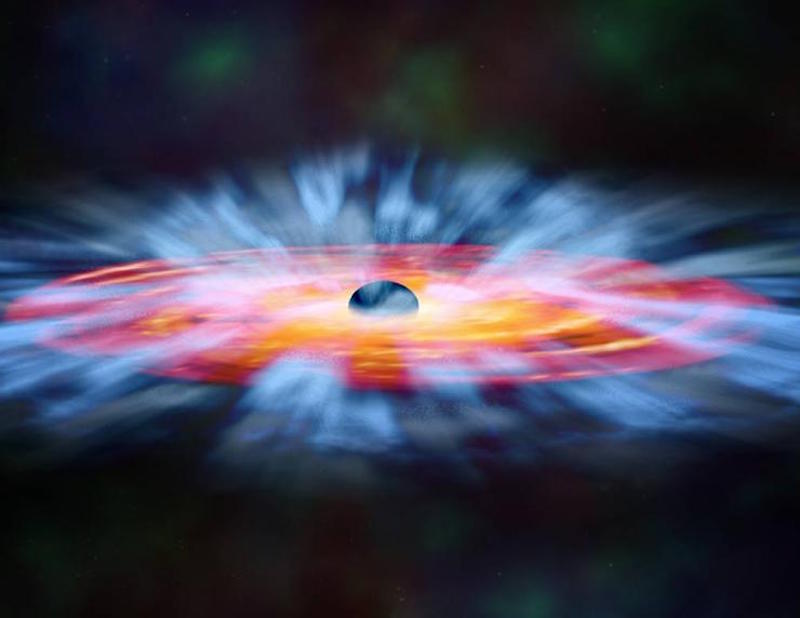
Black holes are known for their voracious appetites. These bodies -- formed when a massive star collapses upon itself -- have occasionally been described as the "vacuum cleaners" of the universe and are notorious for their tendency to wreak havoc on the usual laws of physics that govern the rest of the cosmos.
Now, for the first time ever, scientists have witnessed a black hole swallowing a star and ejecting a flare of matter moving at nearly the speed of light -- a rare event that occurs when a star stumbles across a black hole's gravitational well.
"It's the first time we see everything from the stellar destruction followed by the launch of a conical outflow, also called a jet, and we watched it unfold over several months," Sjoert van Velzen, a Hubble fellow at Johns Hopkins University, said, in a statement released Thursday. "Previous efforts to find evidence for these jets, including my own, were late to the game."
Current theories suggest that when a black hole -- an area of space-time so dense that nothing, not even light, can escape its gravitational influence -- gobbles up an object, a fast-moving jet of plasma composed of elementary particles in a magnetic field can escape from near the black hole's event horizon.
The feeding frenzy of the supermassive black hole in question -- located 300 million light-years away -- was first observed by a team at the Ohio State University last December. After they had ruled out the possibility that the light was from a pre-existing accretion disk -- which forms when a black hole is sucking in matter from space -- the researchers confirmed that the sudden increase of light from the region was due to a newly trapped star.
The observation, reported in the journal Science, confirms predictions made by current theories, according to the team of researchers, which includes scientists from the United States, the Netherlands, Great Britain and Australia.
"The destruction of a star by a black hole is beautifully complicated, and far from understood," van Velzen said. "From our observations, we learn the streams of stellar debris can organize and make a jet rather quickly, which is valuable input for constructing a complete theory of these events."



Some of these words... "stumbled" Really? Or "trapped".... or just mutual attraction? Not easy to keep an open mind it seems.